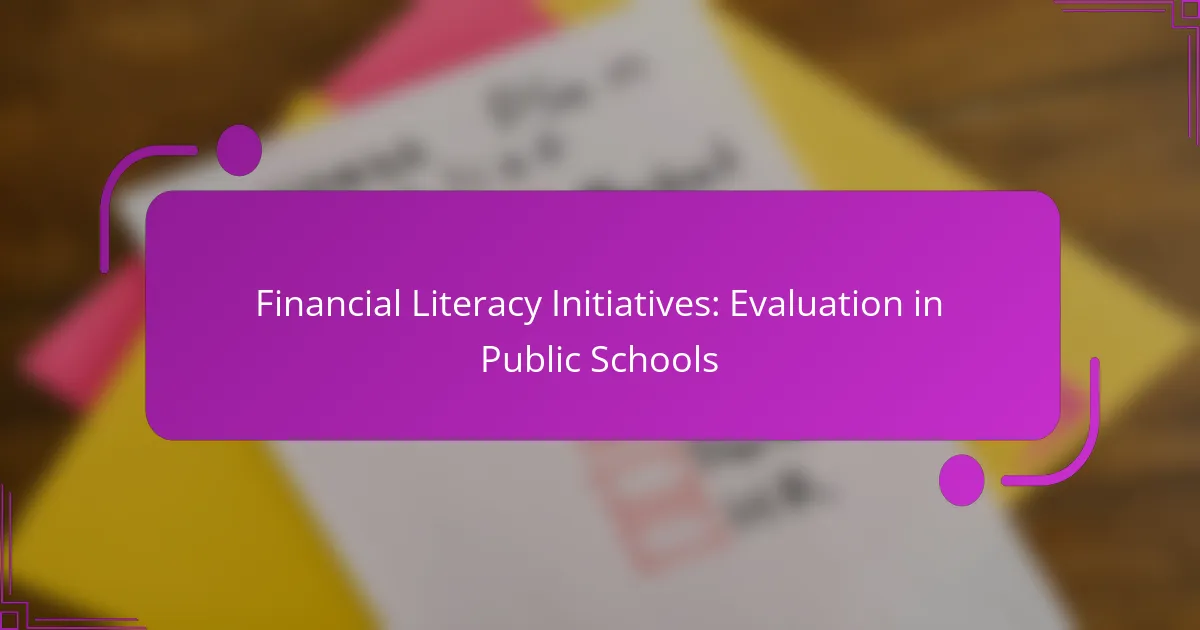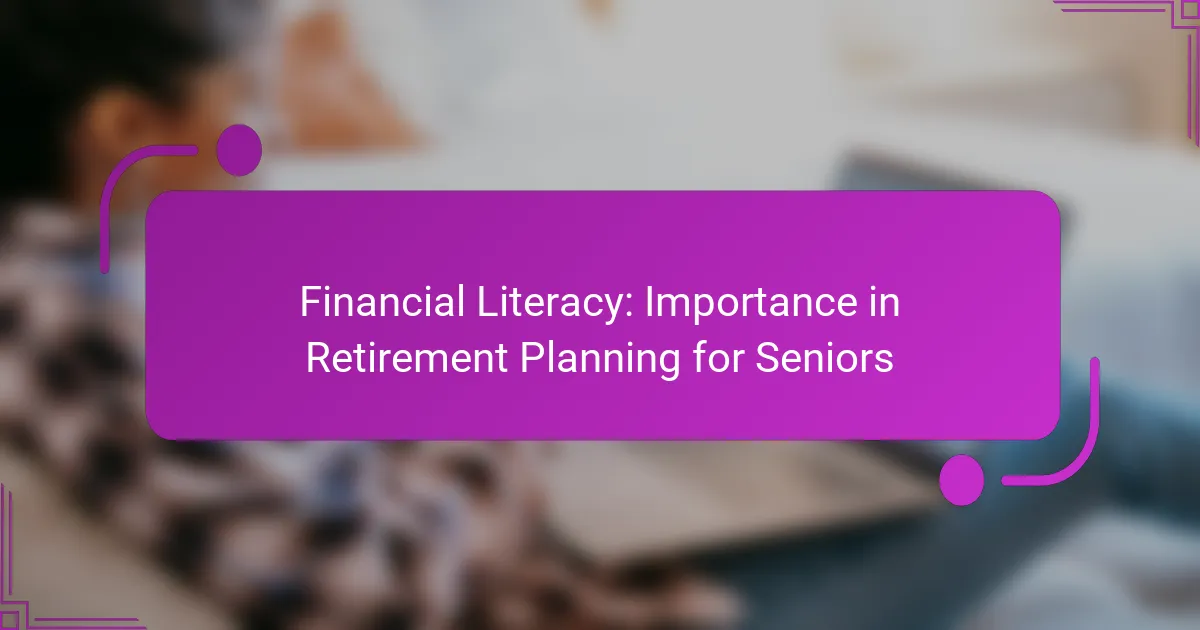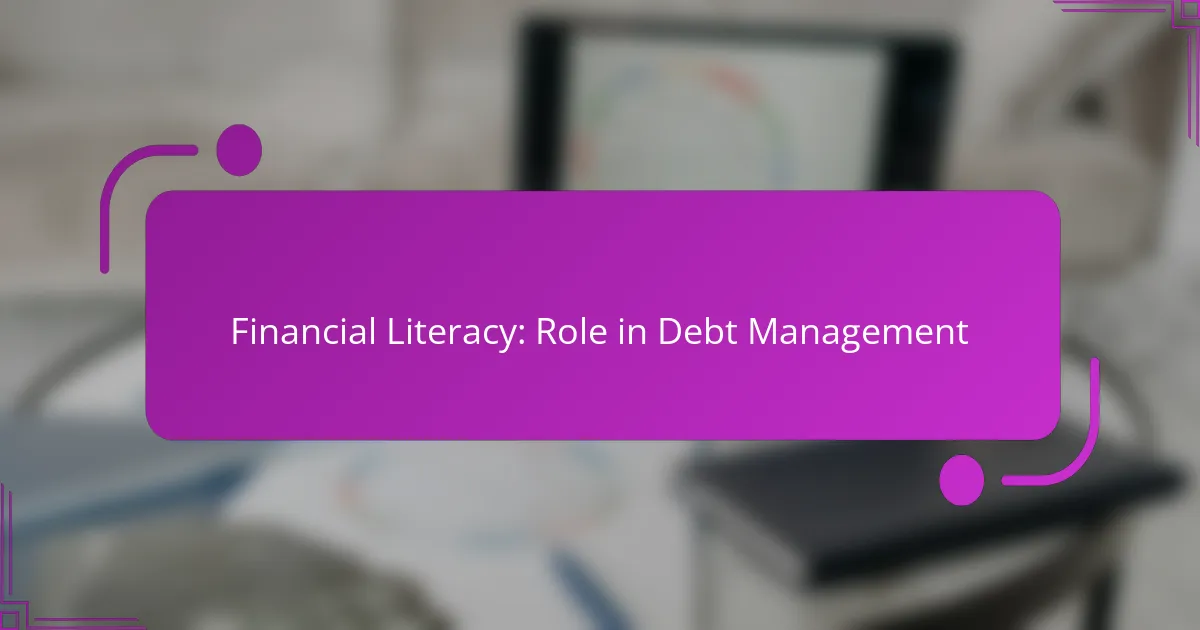Financial literacy initiatives in public schools play a crucial role in preparing students for real-world financial challenges by providing them with essential money management skills. Through structured programs and engaging activities, these initiatives empower students to make informed financial decisions, ultimately enhancing their confidence and academic performance as they transition into adulthood.
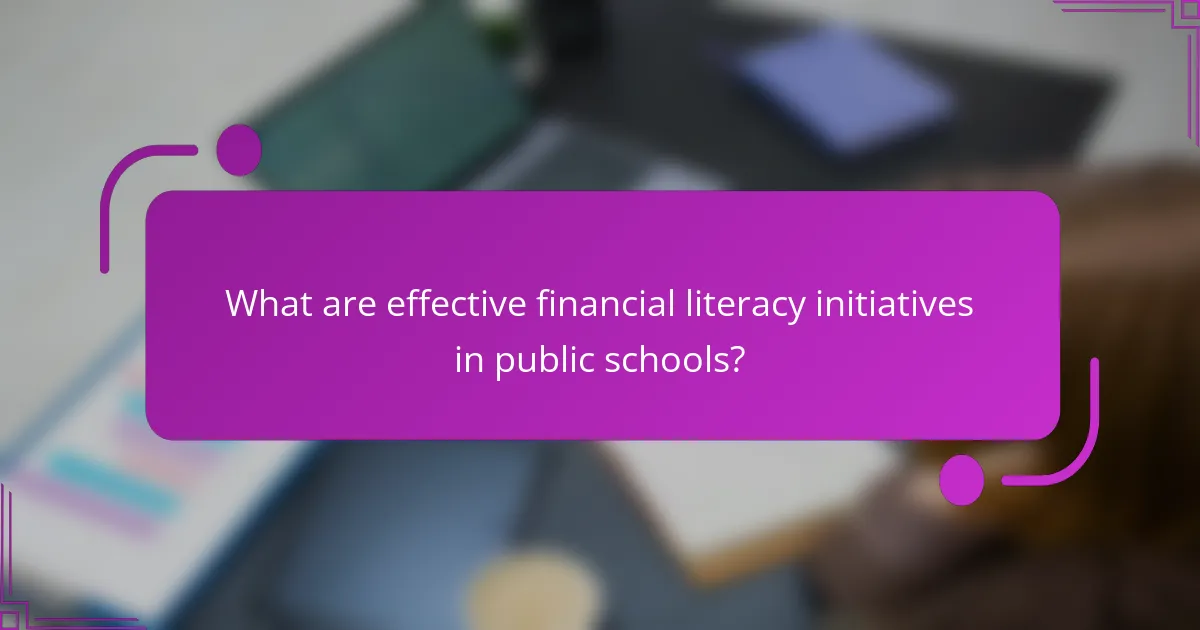
What are effective financial literacy initiatives in public schools?
Effective financial literacy initiatives in public schools equip students with essential money management skills through structured programs and engaging activities. These initiatives focus on practical knowledge, enabling students to make informed financial decisions as they transition into adulthood.
Junior Achievement programs
Junior Achievement (JA) programs provide experiential learning opportunities that teach students about financial literacy, entrepreneurship, and work readiness. Through interactive lessons and real-world projects, students gain insights into budgeting, saving, and investing.
JA programs often involve partnerships with local businesses and volunteers, enhancing the learning experience. Schools can implement JA programs at various grade levels, ensuring age-appropriate content that resonates with students.
National Endowment for Financial Education resources
The National Endowment for Financial Education (NEFE) offers a wealth of resources designed to improve financial literacy among students. Their curriculum includes comprehensive lesson plans, activities, and assessments that cover topics like credit, debt management, and retirement planning.
NEFE’s resources are adaptable for different educational settings, making them suitable for both classroom instruction and after-school programs. Schools can access these materials for free, making them a cost-effective option for enhancing financial education.
Hands-on budgeting workshops
Hands-on budgeting workshops provide students with practical experience in managing finances. These workshops often involve creating budgets based on real-life scenarios, allowing students to practice allocating funds for necessities and discretionary spending.
To maximize effectiveness, schools should consider incorporating local cost-of-living data into these workshops. This approach helps students understand budgeting in their specific economic context, making the lessons more relevant and impactful.
Online financial simulation games
Online financial simulation games engage students in a fun and interactive way while teaching them about money management. These games often simulate real-life financial situations, such as managing a budget, investing in stocks, or planning for future expenses.
Schools can utilize these games as supplemental tools to reinforce classroom learning. Many of these simulations are available for free or at a low cost, making them accessible for public schools looking to enhance their financial literacy initiatives.
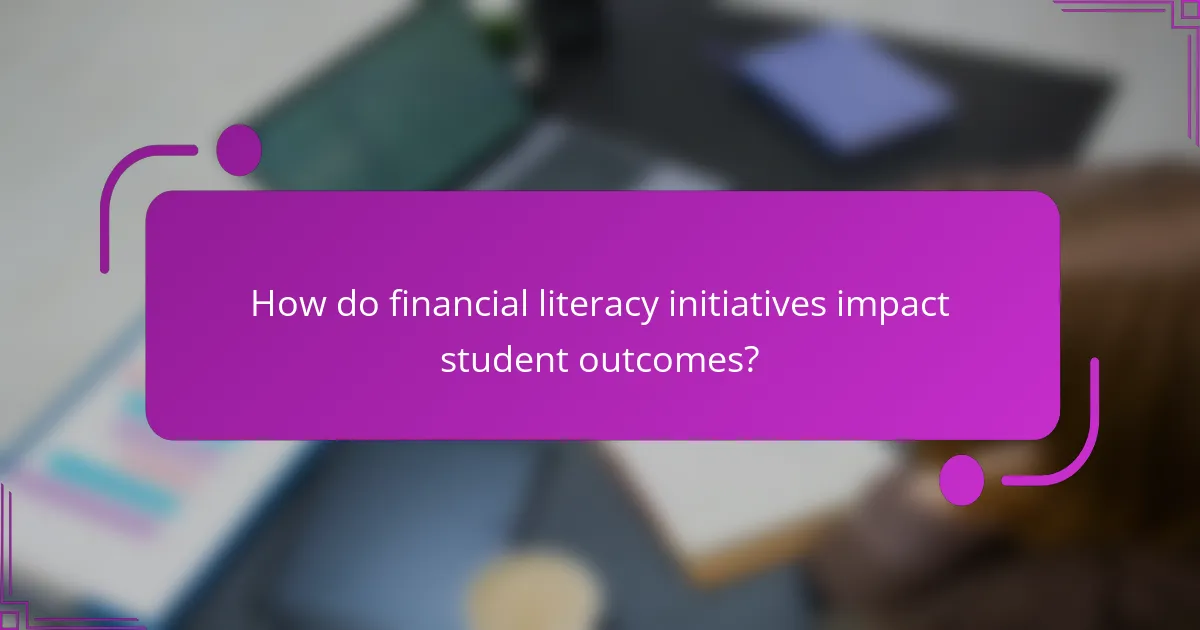
How do financial literacy initiatives impact student outcomes?
Financial literacy initiatives significantly enhance student outcomes by equipping them with essential money management skills. These programs lead to improved budgeting abilities, increased confidence in financial decisions, and often correlate with better academic performance.
Improved budgeting skills
Financial literacy initiatives teach students how to create and manage budgets effectively. By learning to track income and expenses, students can make informed spending choices, which is crucial for their future financial stability. For example, students might use simple budgeting tools or apps to allocate their allowance or part-time job earnings.
Practical exercises, such as simulating real-life scenarios, can help students practice budgeting in a controlled environment. This hands-on approach fosters a deeper understanding of financial concepts and encourages responsible financial behavior.
Increased financial confidence
Participating in financial literacy programs boosts students’ confidence in making financial decisions. As they learn about saving, investing, and managing debt, they become more comfortable navigating financial situations. This newfound confidence can lead to proactive behaviors, such as seeking out scholarships or managing student loans effectively.
Moreover, students who feel financially literate are more likely to engage in discussions about money management with peers and family, reinforcing their skills and knowledge. This social aspect can create a supportive environment for continued learning.
Higher academic performance
There is a notable correlation between financial literacy and academic performance. Students who understand financial concepts tend to perform better in subjects like math and economics, as they can apply practical knowledge to theoretical problems. This understanding can enhance critical thinking and analytical skills.
Schools that incorporate financial literacy into their curriculum often report improved overall student engagement and motivation. When students see the relevance of their studies to real-life situations, they are more likely to invest effort in their education, leading to higher grades and graduation rates.
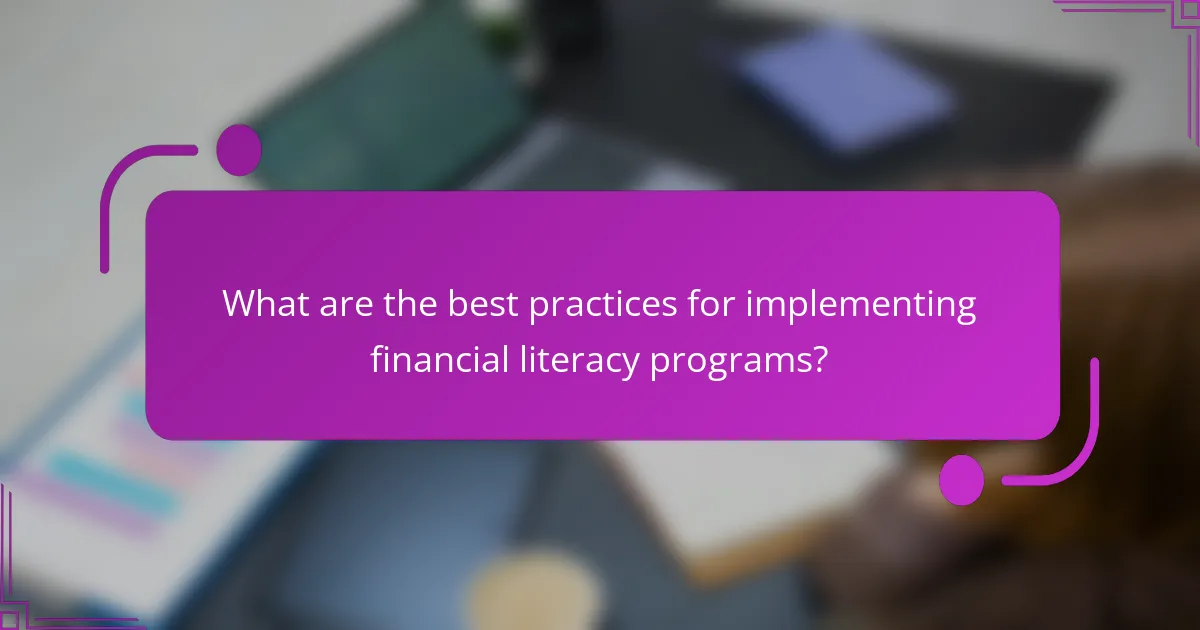
What are the best practices for implementing financial literacy programs?
Effective financial literacy programs in public schools should be integrated into existing curricula, supported by well-trained teachers, and involve community partnerships. These practices ensure that students receive comprehensive education that is both relevant and practical.
Integrating into existing curricula
To successfully integrate financial literacy into existing curricula, schools should align the content with current educational standards. This can involve weaving financial concepts into subjects like mathematics, economics, and social studies, making the learning process more cohesive and relevant.
For example, a math class could include lessons on budgeting and interest calculations, while a social studies class might explore the impact of economic policies on personal finance. This approach not only enhances students’ understanding but also reinforces the importance of financial literacy across various disciplines.
Training teachers effectively
Training teachers is crucial for the success of financial literacy programs. Educators should receive professional development that equips them with the knowledge and tools necessary to teach financial concepts confidently. This training can include workshops, online courses, and access to teaching resources.
Moreover, ongoing support and collaboration among teachers can foster a community of practice where educators share strategies and experiences. Schools might consider pairing less experienced teachers with mentors who have successfully implemented financial literacy lessons.
Engaging community partners
Engaging community partners can significantly enhance financial literacy initiatives. Local banks, credit unions, and financial advisors can provide valuable resources, guest speakers, and real-world insights that enrich the curriculum. These partnerships can also facilitate field trips and workshops that offer hands-on learning experiences.
Additionally, schools should consider involving parents and guardians in financial literacy events, creating a supportive environment for students to discuss and practice their financial skills. This collaboration can help reinforce the lessons learned in the classroom and promote a culture of financial awareness within the community.
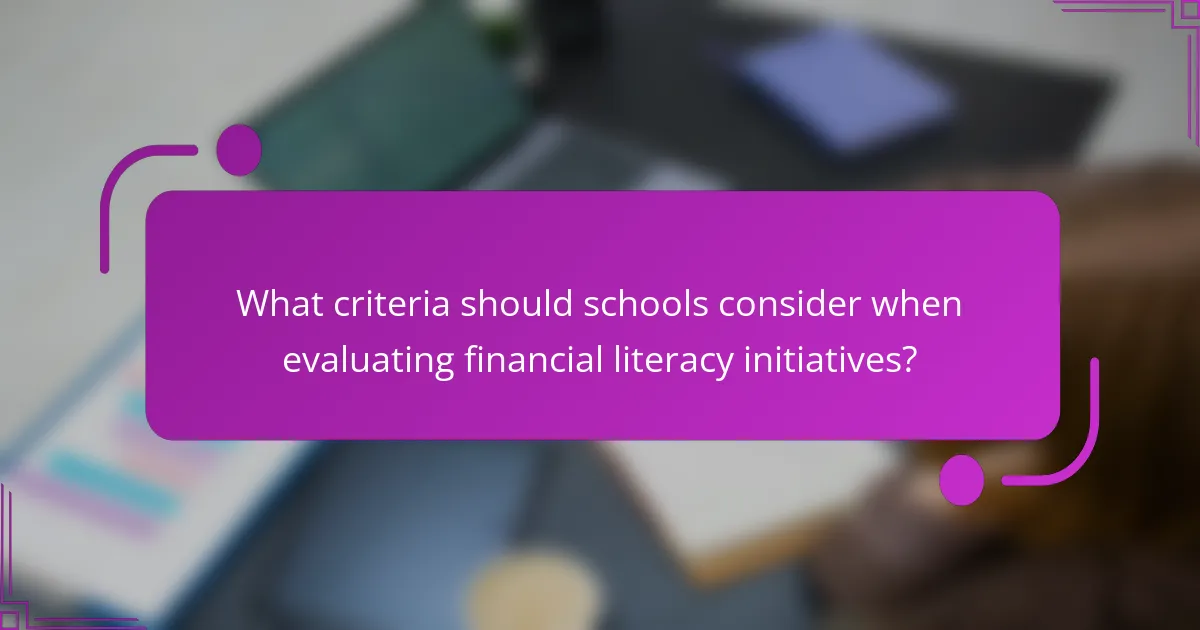
What criteria should schools consider when evaluating financial literacy initiatives?
Schools should consider alignment with educational standards, student engagement metrics, and long-term impact assessments when evaluating financial literacy initiatives. These criteria help ensure that programs are effective, relevant, and beneficial for students’ financial understanding.
Alignment with state standards
Financial literacy initiatives should align with state educational standards to ensure they meet curriculum requirements. Schools can review their local education department’s guidelines to identify specific competencies that students are expected to achieve in financial literacy.
For example, if a state mandates that high school students learn about budgeting and saving, the initiative should include these topics. This alignment not only enhances the program’s credibility but also facilitates smoother integration into existing curricula.
Student engagement metrics
Measuring student engagement is crucial for evaluating the effectiveness of financial literacy initiatives. Schools can use surveys, participation rates, and feedback forms to assess how actively students are involved in the program.
Engagement can be gauged through interactive activities, such as simulations or group projects, which tend to enhance learning. Programs that show high levels of student interest and participation are more likely to achieve positive educational outcomes.
Long-term impact assessments
Long-term impact assessments help schools understand the effectiveness of financial literacy initiatives over time. This can involve tracking students’ financial behaviors and knowledge retention after completing the program.
Schools should consider conducting follow-up surveys or assessments a year or two after program completion. This data can provide insights into whether students apply what they learned in real-life financial decisions, such as budgeting or investing.
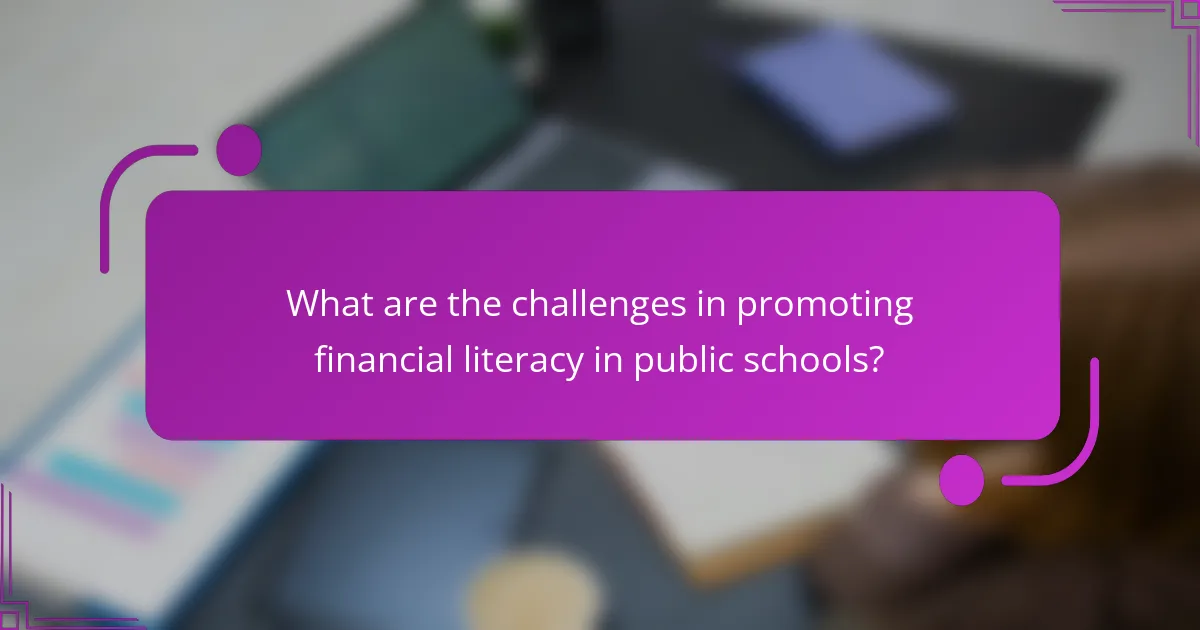
What are the challenges in promoting financial literacy in public schools?
Promoting financial literacy in public schools faces several significant challenges that hinder effective implementation. Key issues include lack of funding, insufficient teacher training, and resistance to curriculum changes, all of which can impede the development of robust financial education programs.
Lack of funding
One of the primary challenges in promoting financial literacy is the lack of funding allocated to these programs. Many public schools operate under tight budgets, making it difficult to prioritize financial education amidst other pressing needs. Without adequate resources, schools struggle to develop comprehensive curricula or provide necessary materials.
To address funding issues, schools can seek partnerships with local businesses or financial institutions that may offer grants or sponsorships. Additionally, advocating for state or federal funding specifically earmarked for financial literacy can help secure necessary resources.
Insufficient teacher training
Insufficient teacher training is another barrier to effective financial literacy education. Many educators may not feel confident in their own financial knowledge, which can lead to a lack of enthusiasm or effectiveness in teaching the subject. Without proper training, teachers may struggle to convey essential financial concepts to students.
To improve teacher preparedness, schools should invest in professional development programs focused on financial literacy. Workshops, online courses, and collaboration with financial experts can enhance teachers’ skills and confidence in delivering financial education.
Resistance to curriculum changes
Resistance to curriculum changes often hampers the integration of financial literacy into public school education. Stakeholders, including parents, educators, and administrators, may be hesitant to alter existing curricula due to concerns about time constraints or the perceived importance of other subjects.
To overcome this resistance, advocates for financial literacy should present clear evidence of its benefits, such as improved student outcomes and better preparedness for real-world financial challenges. Engaging stakeholders in discussions about the importance of financial education can help foster a more supportive environment for curriculum changes.
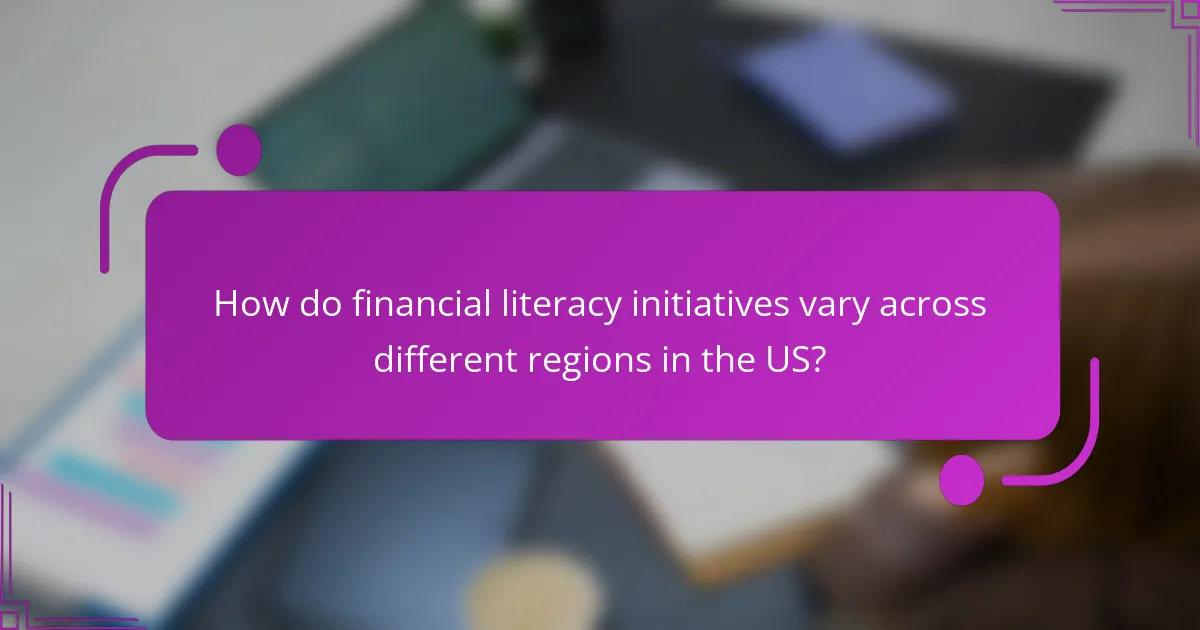
How do financial literacy initiatives vary across different regions in the US?
Financial literacy initiatives in the US differ significantly by region, influenced by state regulations, educational standards, and local community needs. Some states have mandatory financial education courses, while others offer it as an elective or not at all.
State Requirements for Financial Education
Each state has its own approach to financial education, with some mandating courses in high school curricula. For example, states like Virginia and Utah require students to complete a personal finance course before graduation, while others may not have any such requirements.
Understanding these state requirements is crucial for educators and policymakers. States with strong mandates often see improved financial literacy outcomes among students, which can lead to better financial decision-making in adulthood.
Curriculum Content and Focus Areas
The content of financial literacy programs varies widely, focusing on topics such as budgeting, saving, investing, and credit management. Some regions emphasize practical skills, while others may include theoretical aspects of economics.
For instance, a program in California may prioritize understanding credit scores and loans, while a program in Texas might focus more on entrepreneurship and business basics. Tailoring the curriculum to local economic conditions can enhance relevance and engagement.
Community Involvement and Resources
Community involvement plays a significant role in the success of financial literacy initiatives. Local organizations, banks, and nonprofits often collaborate with schools to provide resources and workshops.
In areas with strong community support, students may have access to mentorship programs and real-world financial experiences, such as internships or financial simulations. This hands-on approach can reinforce classroom learning and make financial concepts more tangible.
